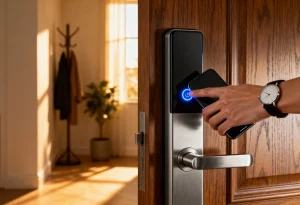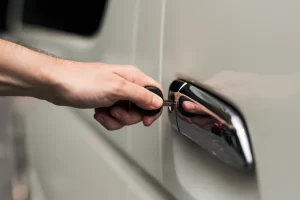 Streamline building access using master keying system design by Altona Locksmiths, delivering tailored control across door locks and padlocks.
Streamline building access using master keying system design by Altona Locksmiths, delivering tailored control across door locks and padlocks.
Master keying system design establishes structured control across multiple locking mechanisms, streamlining security management in commercial and industrial facilities. It enables authorised users to access designated entry points using a tiered key system, improving operational efficiency and reducing the number of keys required.
Application of Master Keying System Design in Door Locks
Commercial environments implement a structured key system to regulate access between departments, storage areas, and shared spaces. This approach assists supervisors and managers in maintaining oversight without compromising security.
In residential complexes, the system allows tenants to access private units, while property managers maintain entry to common areas and service points. This structure improves responsiveness and accountability in multi-unit dwellings.
Extending Master Keying System Design to Padlocks
Industrial facilities incorporate master keying system design into padlocks used on gates, storage units, and perimeter enclosures. Matching cylinder mechanisms ensure consistent access control across indoor and outdoor lock types.
In operations involving restricted compounds or logistics yards, this configuration allows authorised personnel to access secured zones without carrying multiple keys. This reduces inefficiencies and enhances control over external access points.
Customisation Possibilities in Master Keying System Design
An integrated master key solution can be tailored to suit operational demands across property types and industry sectors. Its flexibility supports long-term integration and efficient key management.
• Hierarchical Access Tiers: Clearance levels are structured to align with roles, departments, or facility zones. This hierarchy maintains controlled access while allowing operational flow
• Adaptation to Existing Locks: New cylinders can be fitted into current hardware, reducing installation costs. Existing doors remain functional without compromising the new system’s integrity.
• Independent Locks Under One Hierarchy: Each lock operates with a unique key while remaining part of the master key network. This setup balances individual access with system-wide oversight.
• Uniform Design Across Lock Formats: Various lock types, including cabinets, padlocks, and entry doors, can be included in one system. This standardisation simplifies maintenance and key assignment.
• Secure Tracking Capabilities: Systems allow integration of keyholder records and issue logs. These controls support auditing and access accountability.
• Future-Ready Extensions: Additional locks and keys can be added as the business grows or site layouts change. The design accommodates evolving access requirements with minimal disruption.
• Restricted Key Duplication: Proprietary key blanks protect against unauthorised copies. This restriction preserves the integrity and exclusivity of the master system.
Structured Access Control from a Trusted Provider
Through a refined understanding of integrated locking solutions, Altona Locksmiths delivers a hierarchical key system tailored to property layout and workflow requirements. Its commitment to practical, secure access ensures systems perform reliably from implementation to daily use.
Submit your access control requirements and receive a system tailored to unify and secure your premises.
Related Blog: Master Key Systems: The Smart Solution for Multi-Lock Management
Learn more about the dynamics of the master key system with this guide by LSA Michigan: Master Key System Design Guide












